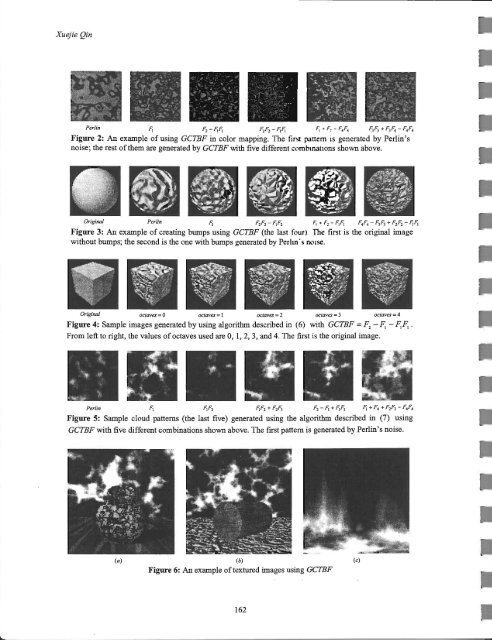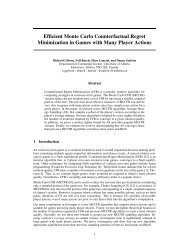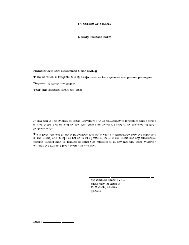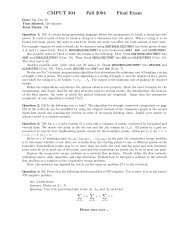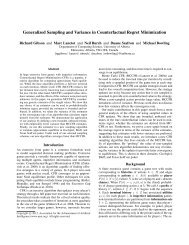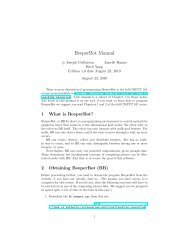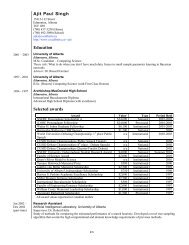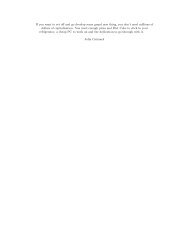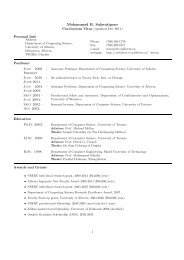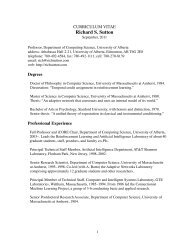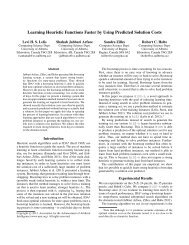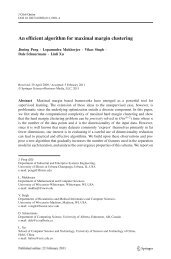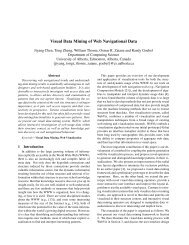Here - Webdocs Cs Ualberta
Here - Webdocs Cs Ualberta
Here - Webdocs Cs Ualberta
- No tags were found...
You also want an ePaper? Increase the reach of your titles
YUMPU automatically turns print PDFs into web optimized ePapers that Google loves.
Xuejie Qin<br />
Perlin Fj F2 - FjFj F2F2 - FjFj F, • F, - F.F. FJFJ + FJF4 - F4F.<br />
Figure 2: An example of using GCTBF in color mapping. The first pattern is generated by Perlin's<br />
noise; the rest ofthem are generated by GCTBF with five different combmatlons shown above.<br />
Original Perlin Fj F2F2 - FjF2 F, • Fl - F,Fj F.F 4 - FJF J + F2F2 - FjFj<br />
Figure 3: An example of creating bumps using GCTBF (the last four) The first is the original image<br />
without bumps; the second is the one with bumps generated by Perhn· s nOise.<br />
Original oClaves=O oclaves= 1 octaves = 2 octaves = 3 oclaves=4<br />
Figure 4: Sample images generated by using algorithm described in (6) with GCTBF = F2 - F, - F,F, .<br />
From left to right, the values of octaves used are 0, I, 2, 3, and 4. The first is the original image.<br />
Perlin Fj FjF2 FjF2 + F2FJ F2 - Fj + FjFj Fj + F. + F2FJ - F.F.<br />
Figure 5: Sample cloud patterns (the last five) generated using the algorithm described in (7) using<br />
GCTBF with five different combinations shown above. The first pattern is generated by Perlin's noise.<br />
(a) (b) (c)<br />
Figure 6: An example of textured images using GCTBF<br />
162


